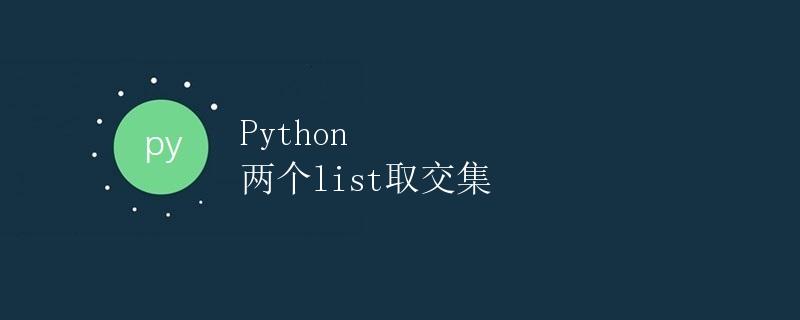Python 两个list取交集

1. 简介
在编程中,经常会遇到需要找出两个列表的交集的需求。Python中提供了多种方法可以实现这一操作。本文将详细介绍使用Python实现两个list取交集的方法,并提供示例代码。
2. 使用set
Python中的set(集合)是一种无序的、不重复的数据集合。利用集合的特性,我们可以方便地找出两个列表的交集。
2.1 使用内置函数set()转换为集合
我们可以先将两个列表转换为set类型,然后使用intersection()函数找出两个集合的交集。
list1 = [1, 2, 3, 4, 5]
list2 = [3, 4, 5, 6, 7]
set1 = set(list1)
set2 = set(list2)
intersection_set = set1.intersection(set2)
intersection_list = list(intersection_set)
print(intersection_list)
输出结果:
[3, 4, 5]
2.2 使用&操作符
与使用内置函数intersection()相似,我们也可以使用&操作符来取两个集合的交集。
list1 = [1, 2, 3, 4, 5]
list2 = [3, 4, 5, 6, 7]
set1 = set(list1)
set2 = set(list2)
intersection_set = set1 & set2
intersection_list = list(intersection_set)
print(intersection_list)
输出结果:
[3, 4, 5]
3. 使用列表推导式
除了使用集合的方法,我们还可以使用列表推导式来实现两个列表的交集。
list1 = [1, 2, 3, 4, 5]
list2 = [3, 4, 5, 6, 7]
intersection_list = [x for x in list1 if x in list2]
print(intersection_list)
输出结果:
[3, 4, 5]
4. 使用filter函数
Python中的内置函数filter()可以通过指定一个函数和一个可迭代对象来筛选出满足条件的元素,我们可以利用这个函数来实现两个列表的交集。
list1 = [1, 2, 3, 4, 5]
list2 = [3, 4, 5, 6, 7]
intersection_list = list(filter(lambda x: x in list2, list1))
print(intersection_list)
输出结果:
[3, 4, 5]
5. 使用collections.Counter
Python中的collections模块提供了Counter类,可以用来统计元素出现的次数。我们可以使用Counter来实现两个列表的交集。
from collections import Counter
list1 = [1, 2, 3, 4, 5]
list2 = [3, 4, 5, 6, 7]
counter1 = Counter(list1)
counter2 = Counter(list2)
intersection_counter = counter1 & counter2
intersection_list = list(intersection_counter.elements())
print(intersection_list)
输出结果:
[3, 4, 5]
6. 总结
本文介绍了使用Python实现两个列表取交集的多种方法,包括使用集合、列表推导式、filter函数和collections.Counter。不同的方法适用于不同的场景,根据实际需求选择合适的方法即可。在处理大型数据集合时,使用集合的方法可能会更加高效。
 极客教程
极客教程